Guideline for a successful acoustical monitoring of bat activity at wind turbines
To assess the danger potential for bats at wind turbines an acoustical activity monitoring - a so-called nacelle monitoring - is currently the method of choice and officially required in many German federal states. Although searching of dead bats or heat optical methods are also a practical and direct way to prove the bat activity at wind turbines both methods are much more complex and costly. The basic principle of an acoustical activity monitoring and a final risk assessment is quite simple: For echolocation during the flight, bats frequently emit ultrasonic calls that can be recorded with corresponding microphones. Subsequently, the frequency of the recorded calls near the nacelle allows for the estimation of bat activity at the specific wind power plant. In association with prevailing wind speed, it is possible to develop bat-friendly operation algorithms for the considered wind turbine (see Brinkmann et al. 2011). To calculate such operation algorithms you can utilize the software tool ProBat.
Periods for a nacelle monitoring
In order to guarantee a minimum standard in acoustical bat activity monitoring, authorities prescribe time periods in which the nacelle monitoring have to be performed. It should be noted that these vary from state to state. Mostly, the monitoring have to be conducted for two years during the activity period of bats from April to October, whereby the main activity period is between 01 July and 30 September. These are long periods of time and the difficulty to carry out a successful bat monitoring is to run bat detection systems throughout the whole period of time without major disruption or data loss. If less than 75% of the bat activity period is monitored, the calculation of bat endangering is inaccurate. If less than 66% of the bat activity period is monitored, it is hardly possible to make any statements. Similarly, an evaluation with the software tool ProBat is no longer possible. To avoid this, it is necessary to use most reliable bat detector systems. The most common reasons for invalid measurement periods and an associated detection failure are:
- Decrease of the microphone sensitivity (e.g. by humidity, dirt)
- Failure of the detector system, for example, by power cuts
- Interferences from ultrasonic noise
- Fill up of storage media
Recordings caused by noise
Usually the two last-mentioned points are linked since recordings triggered by noise can result in a rapid depletion of the storage capacity of the monitoring system. Therefore, it must be avoided on the one hand that noise causes recordings and on the other hand storage media must be chosen that are large enough to absorb occasional disturbances. Such disturbances can be generated, for example, by power supplies, which often produce signals in the ultrasound range, by metal objects, which clash against each another, or by electromagnetic radiation. To avoid recordings by interferences, the most detector systems only use quite unspecific bandpass filter. This means only ultrasonic signals in a certain frequency range can trigger recordings. However, many disturbances are in the typical bat calls frequency range (15 - 80 kHz, for European bats and calls in free airspace). To solve this problem, the BATmode-System utilizes the bat call trigger filter of the Avisoft RECORDER-software. Based on a frequency analysis the filter identifies specific characteristics of bat calls and ensures that bat calls are recorded very selectively.
Detection distance
Since the rotor blades presents the main threat for bats at wind turbines it is important that the used detectors can recognize bat calls in the largest possible area of this "rotor swept area". Due to the steadily increased rotor diameter, which are nowadays up to 126 m (radius 63 m) large detection ranges are needed and also already required in some federal German states. The detection range is hereby substantially determined by the attenuation of the ultrasonic calls in air, which is subject to the influence of different parameters. To illustrate this, in figures 1, 2 and 3, the sound attenuation constant in air α is shown as a function of sound frequency f, the relative humidity φ and the temperature t.
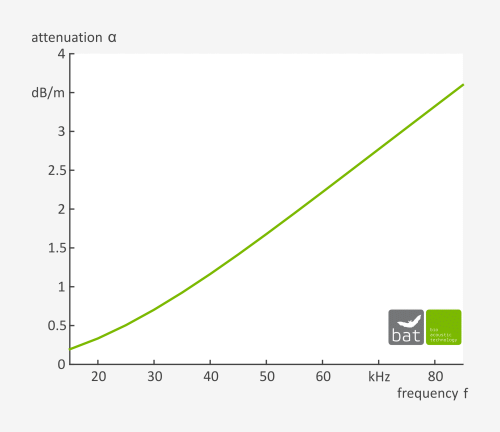
Fig. 1: Sound attenuation α in air in dependence of the sound frequency f at t = 24°C and φ = 80%
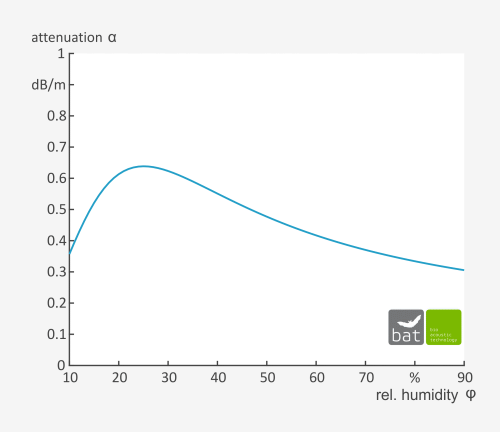
Fig. 2: Sound attenuation α in air in dependence of the relative humidity φ at f = 20kHz and t = 24°C
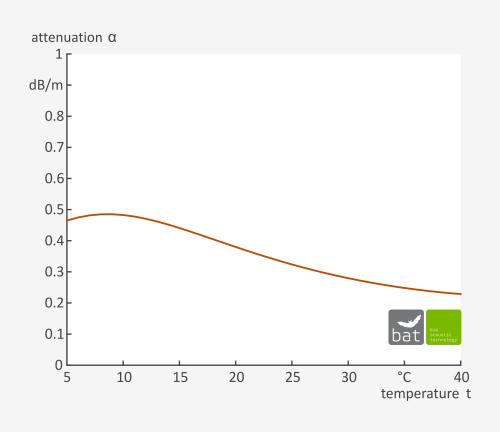
Fig. 3: Sound attenuation α in air in dependence of the temperature t at f = 20kHz and φ = 80%
Because of this attenuation, it is hardly possible to achieve omnidirectional detection distances over 80 m even for relatively low frequencies (20 kHz). The often by manufacturers in reports or manuals specified enormous range of different detection systems can only be achieved through the utilization of highly directional microphones. For example condenser microphones with a large diaphragm, which certainly can be very sensitive and thus achieve large detection range, but only for frontal sound incidence. However, for lateral sound incidence, such systems are extremely insensitive and hence, the detection volume is very unevenly distributed and the "rotor swept area" may only be poorly represented. Therefore, it is essential to use small microphones, which can represent a nearly hemispherical detection volume due to their superior omnidirectionality (see figure 4 and 5). Another factor determining the detection range of a detector is the so-called "trigger threshold", which represents the sound pressure level at which a signal triggers a recording. The lower the threshold, the greater the range of the detector. The increased detection range ensures a larger observed rotor swept area and consequently the danger potential for bats can be estimated more precisely. BATmode comes by default with a threshold of -37 dB SPL. This is a very low threshold compared to other devices and allows for a large detection volume (see Fig. 4 and 5). In principle, the trigger threshold can be adjusted steplessly to any other value. However, lower thresholds are not recommended because this would increase the risk for recorded disturbances even with applied bat call filter significantly. In contrast, detection distance and volume will be reduced with a corresponding increase of the trigger threshold. Since the sound pressure level is a logarithmic unit, it must be kept in mind that the decrease of the threshold by 6 dB results in a halving of the detection distance and the monitored volume will be reduced to about a quarter. Since, as already mentioned, the detection range also depends on the sound frequency, a reduction of the trigger level threshold would result in only very small observed volumes in the detection of high calling bat species (for example, genus pipistrelles). Here, it should be noted that an increased detection distance does not necessarily lead to more recorded calls. The long post trigger of the BATmode-System rather permits that bat calls are not broken down into individual files, but completely ringing sequences are recorded in one file (see Fig. 7 and 8). This facilitates the determination of the bat calls significantly.
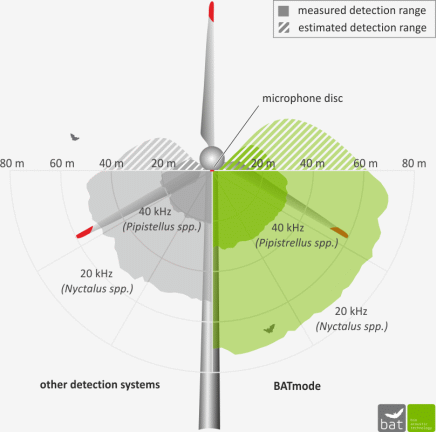
Fig. 4: Directional characteristic and average detection distances of the BATmode compared to other detection systems for call frequencies of 20/40 kHz (t = 24°C, φ = 80%). For reference, a wind turbine with a rotor diameter of 120 m is shown, where the microphone is installed in the bottom of the nacelle.
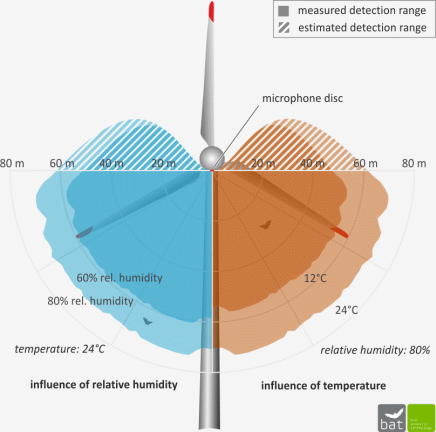
Fig. 5: Directional characteristic and average detection distances of the BATmode for a relative humidity φ = 60/80% (f = 20kHz, t = 24°C) or a temperature of 12/24°C (f = 20kHz, φ = 80%). For reference, a wind turbine with a rotor diameter of 120 m is shown, where the microphone is installed in the bottom of the nacelle.
Microphones
As explained in the previous section, the used microphones are of central importance for a meaningful and therefore successful monitoring of bat activity at the nacelle of wind turbines. On the one hand, it is important to choose a microphone that exhibits a very high sensitivity and a flat frequency response in the main frequency range of bat calls (15 - 80 kHz). Furthermore, the microphone should be as omnidirectional as possible (record also laterally incidental sound) and insensitive against environmental influences. Electret microphones of the company Knowles have proven themselves in years of use at wind turbines. These small microphones are in contrast to large condenser microphones, which are often used by other detection systems, omnidirectional and thus have the required consistent spherical detection volume. In the BATmode-System, the Knowles electret microphone is installed in a stable, splash-proof disk, in which a microphone heating is integrated additionally. Since this avoids condensation on the microphone, it ensures a consistent microphone sensitivity and at the same time protects the microphone from damage caused by condensation water collection on the microphone diaphragm.
Reliability of the systems
Of particular importance for the detection of bats in the nacelles of wind turbines is the reliability of the detector systems, also under the prevailing difficult conditions - extreme temperature fluctuations, vibration, dirt, power failures, electromagnetic fields of generator and converter. Therefore, the BATmode-System can be installed in the especially developed BATbox. This protects the system effectively against dirt and mechanical damage and can be easily placed and installed in the nacelle of the wind turbine due to its small dimensions. A particular problem is the damage of storage media due to the tough conditions. For this reason, the data is backed up daily on two storage media in the BATmode-System. In case of power failure, the system can continue operation over several hours, with the aid of the integrated uninterruptible power supply (UPS) in BATbox. In case of longer power failures, the BATmode-System restarts automatically as soon as the power supply returns and continues independently with the monitoring with the previous settings. To counter the electromagnetic interference and to avoid interspersion in the microphone signal the BATmode-System has an integrated microphone preamplifier in the microphone disc. In combination with the shielded cables, very long cable lengths are possible. This has the advantage that the microphone disc and the BATmode-System can be installed at different locations in the nacelle and the system can be flexibly adapted to different wind turbine types.
Control of the detection systems
An important issue to obtain valid data in as many periods as possible is the regular control of the detection systems. Since onsite checks in the nacelle are linked with high costs and effort (travel, providing a service team of the manufacturer, shutdown of the wind turbine, ...) most systems provide remote control via a status-SMS for example, which make information about the current microphone sensitivity, the level of the storage medium and the number of recorded calls accessible. Thus, it is possible to determine the current state of the system and intervene if necessary to keep the detector’s downtime to a minimum. However, the costs for a needed maintenance cannot be reduced in this way. In order to avoid maintenance-related nacelle climbs completely, a bi-directional access to the detection system is required, which also makes it possible to change settings and to download recorded data from the wind turbine. The latter is important, not only to know if recordings were made, but whether calls of bats can be found within these recordings – because in some German federal states, bat activity has to be assessed without delay. This has the consequence that recorded data have to be made available from the wind turbine, regularly. However, due to the remote access methods of the BATmode-System, this is not a problem. Basically, different ways of remote access are possible. It is essential that not only one way of system access is provided by the detection system since due to location and type-specific characteristics of the wind turbine individual access paths are often not feasible. In order to allow also remote system access to in this regard difficult wind turbines, the BATmode-System has multiple access paths (see Fig. 6), whose functions and requirements are listed below:
- SMS
- Requires mobile telephone reception at the wind turbine site
- Allows status and remote control SMS
- No data download possible
- Mobile broadband connection (3G, HSPA, EDGE, ...)
- Requires mobile telephone reception with sufficient transmission speed at the wind turbine site
- Allows use of the cloud service myBAT, status mail and full access to the system
- Data download possible
- WLAN
- Connection from the foot of the wind turbine possible
- Allows full access to the system
- Data download possible
- LAN via internet connection of the wind turbine
- Must be provided by the operator
- Allows use of the cloud service myBAT, status mail and full access to the system
- Data download possible
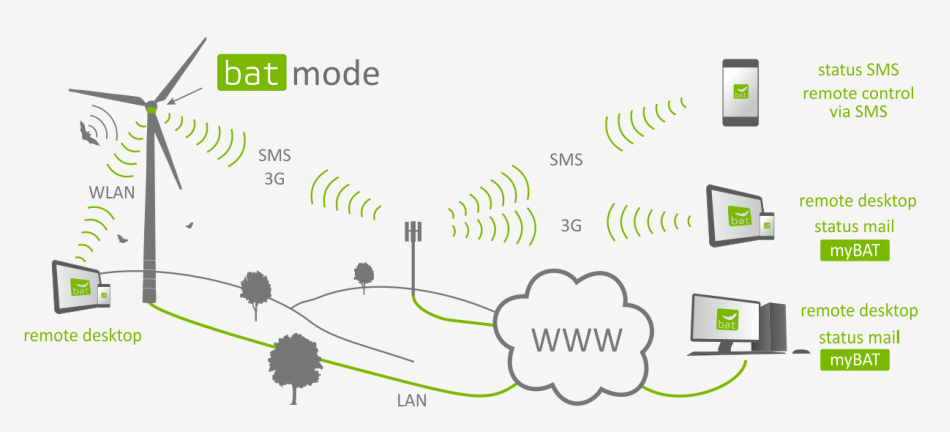
Fig. 6: Illustration of remote access options to the BATmode-System
Evaluation of the data
For a successful nacelle monitoring, it is advisable to check the recorded data already manually during the monitoring is running. To have a look at spectrograms or time signals of the recordings the program BATscreen can be utilized (typical call sequences see Fig. 7 and 8). By this, problems like disturbances or incorrect settings (too short post trigger or similar) can be detected in time and the user can react to it. As mentioned above, BATmode provides many remote access options to the system, so that data control during monitoring is easily possible. After completion bat monitoring, the recordings have to be analyzed to define different group of species and to filter disturbances. The installed recording program RECORDER on the BATmode can also be used to evaluate recorded data automatically. For example, even follow-up a higher trigger threshold can be set or the recordings can be assigned to different species groups and disturbances can be filtered. Since an automated bat call detection filter never will work faultlessly, a subsequent manual call evaluation is indispensable to achieve shutdown-times as short as possible. An ideal tool for this manual evaluation is BATscreen, which provides a fast and efficient call categorization. The resulting evaluation can be imported into the program ProBat, subsequently. This allows the direct calculation of bat-friendly operation algorithms, which can be fed to the control of the wind turbine. As already mentioned, for the calculation of the operation algorithm it is essential that the nacelle monitoring was carried out over an as long as possible period. Please note in addition to the respective regulations of the states also the data requirements of ProBat.
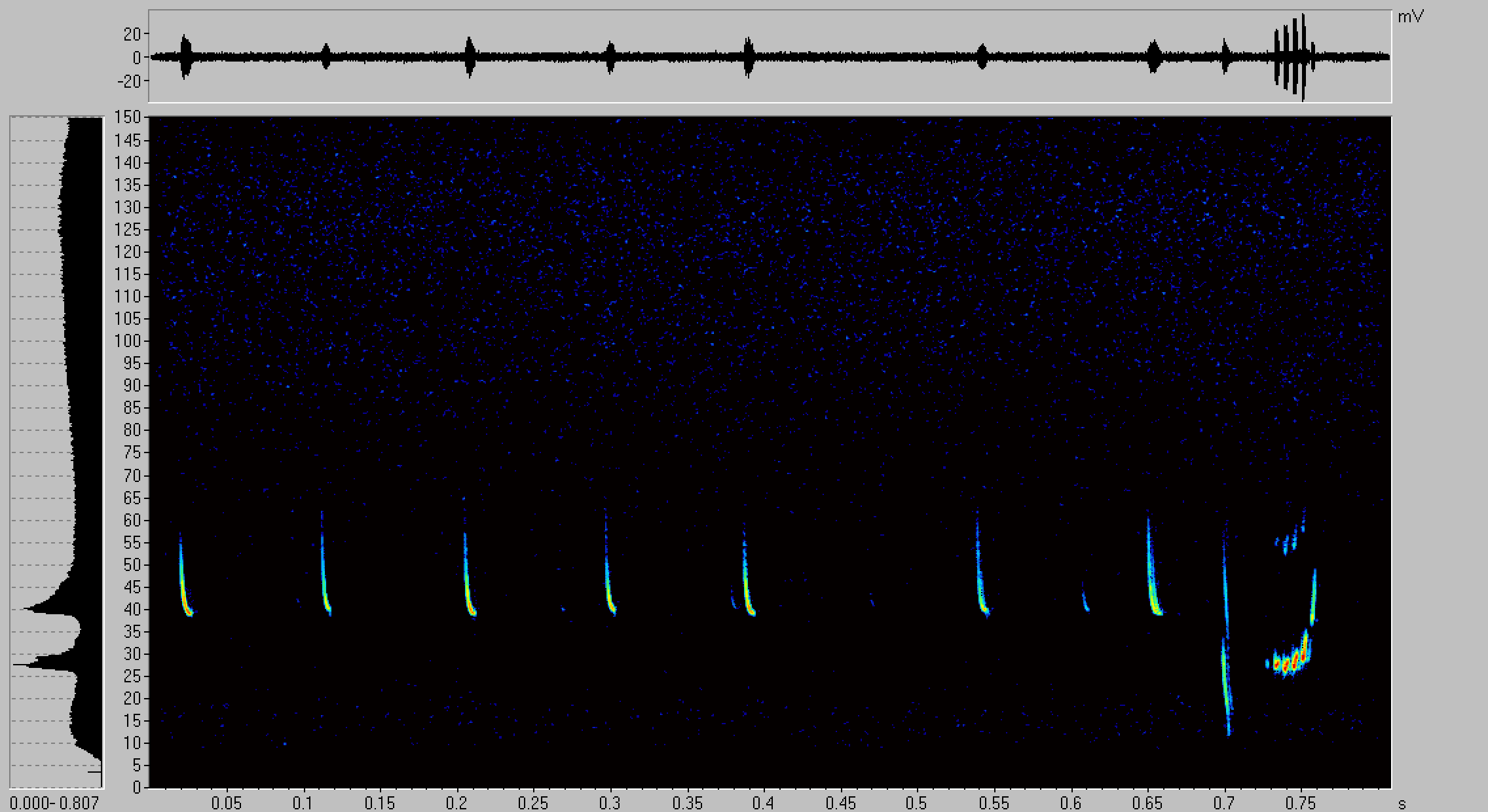
Fig. 7: Call sequence of a Pipistrellus nathusii, containing localization as well as social calls.
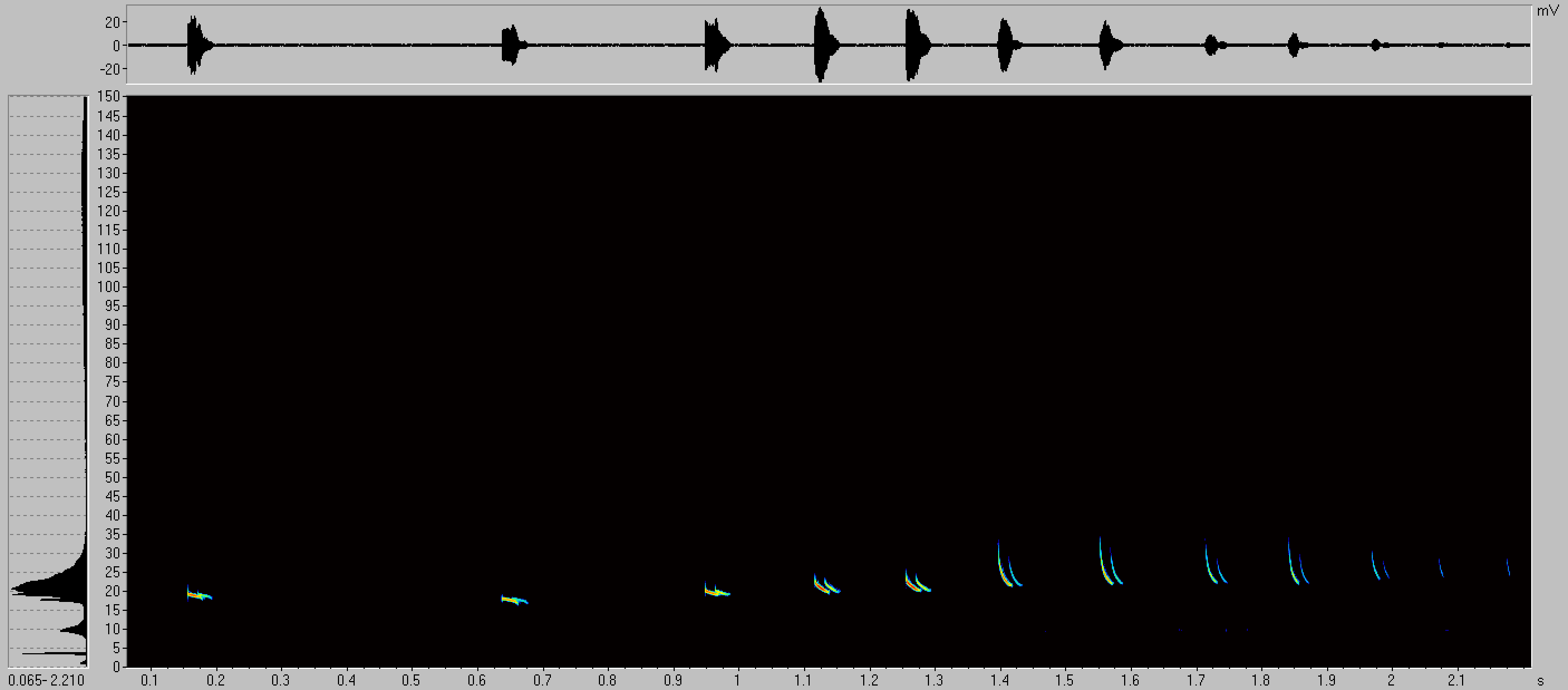
Fig. 8: Typical call sequence of a noctule


